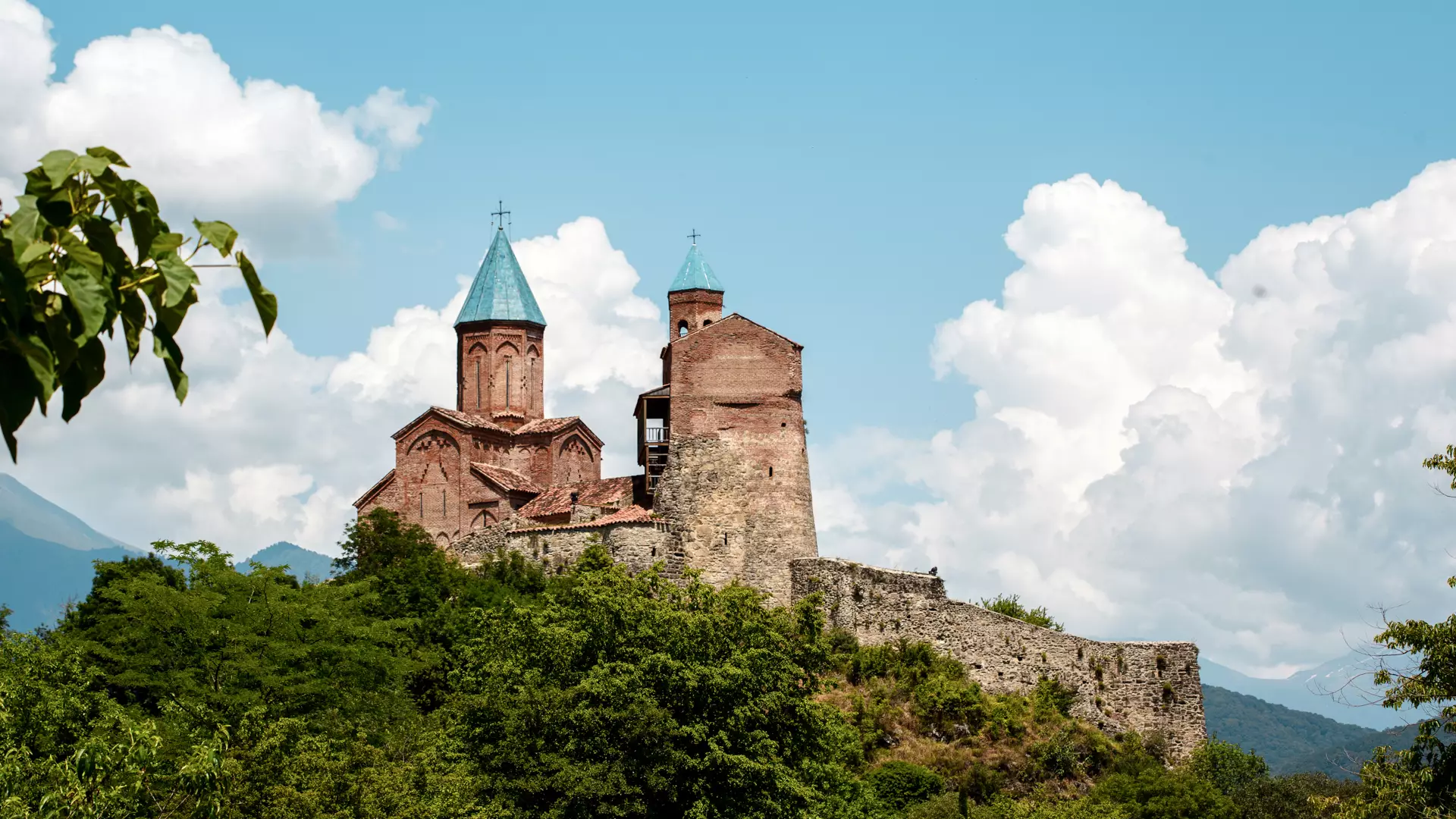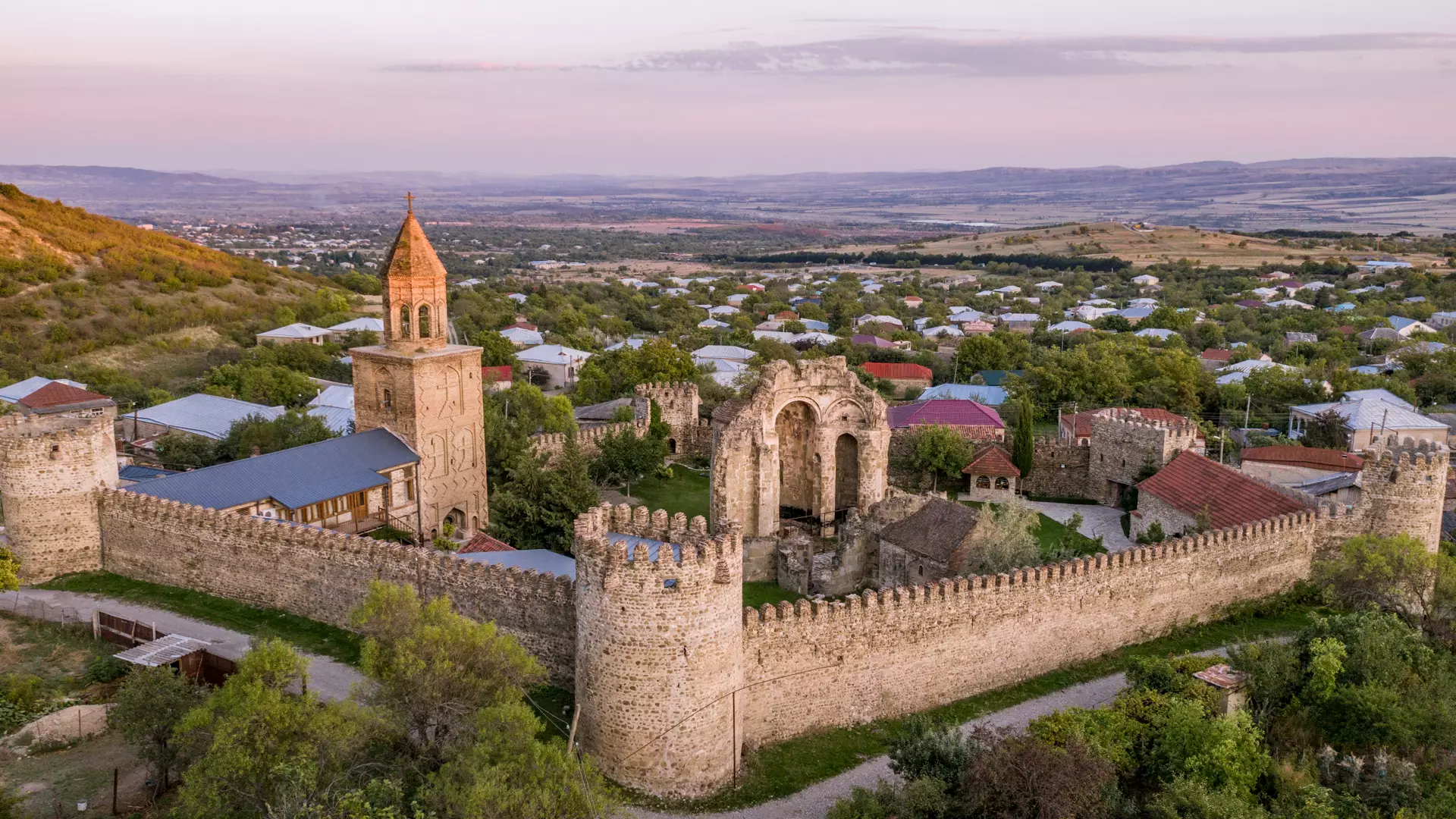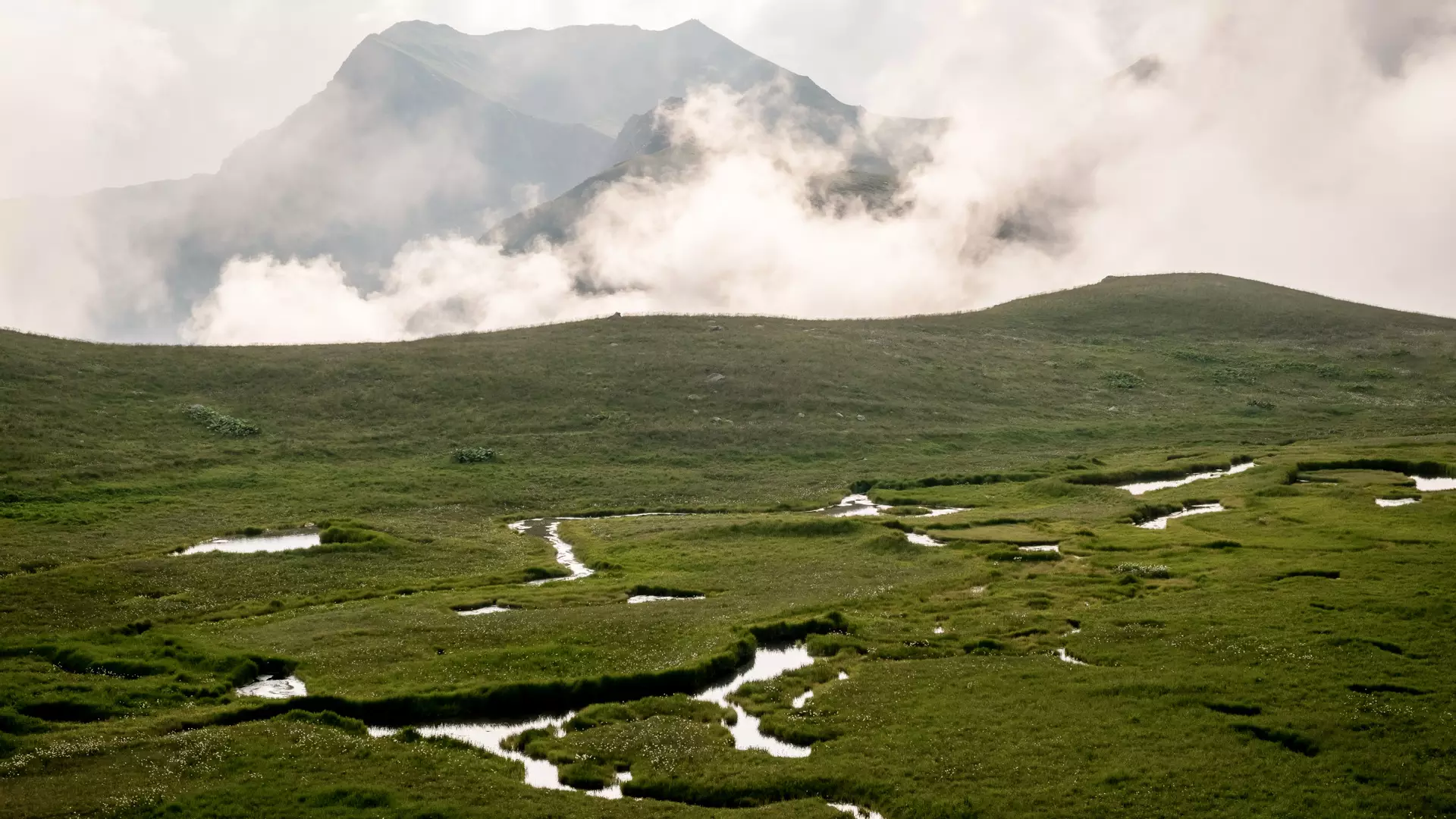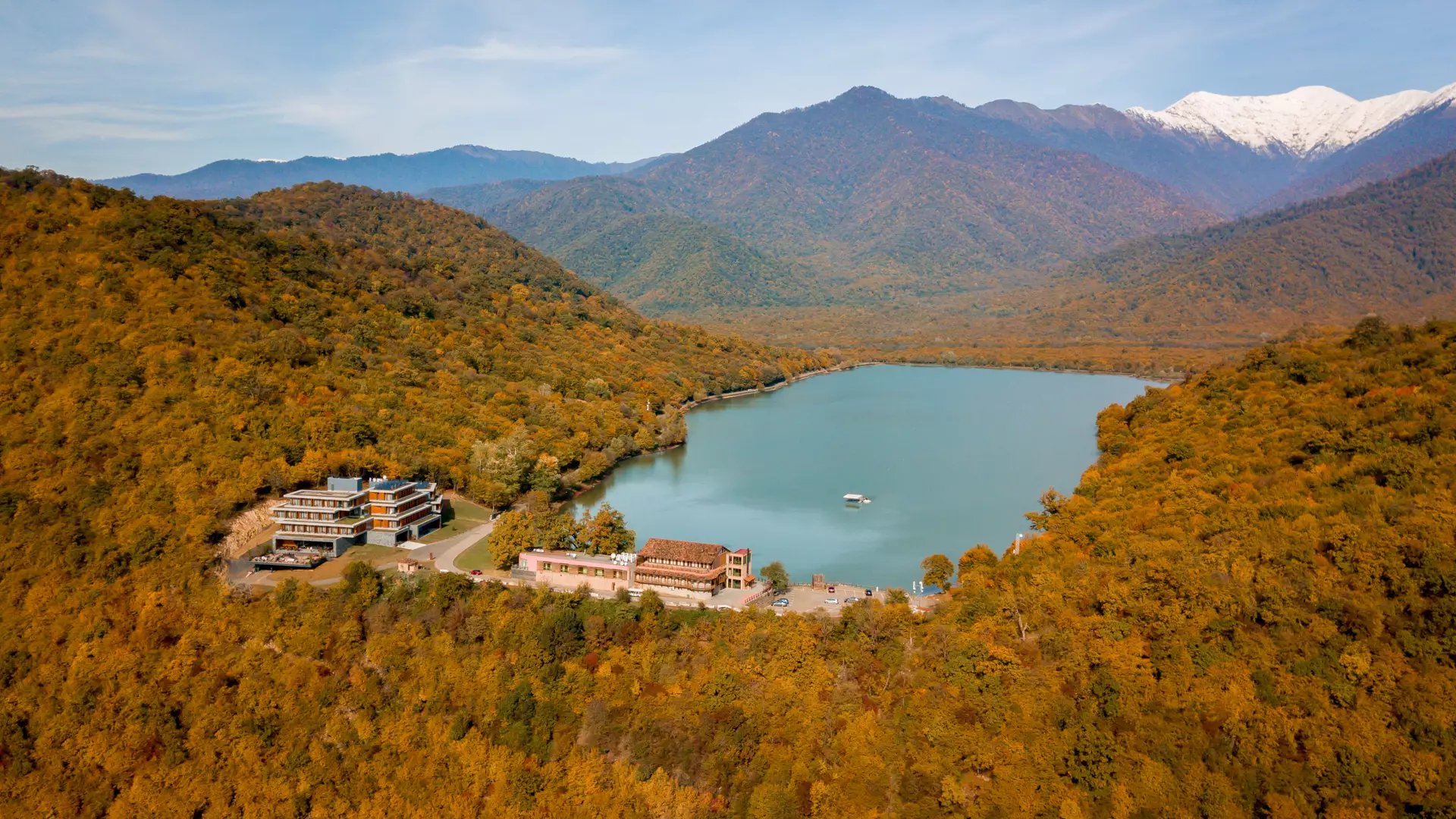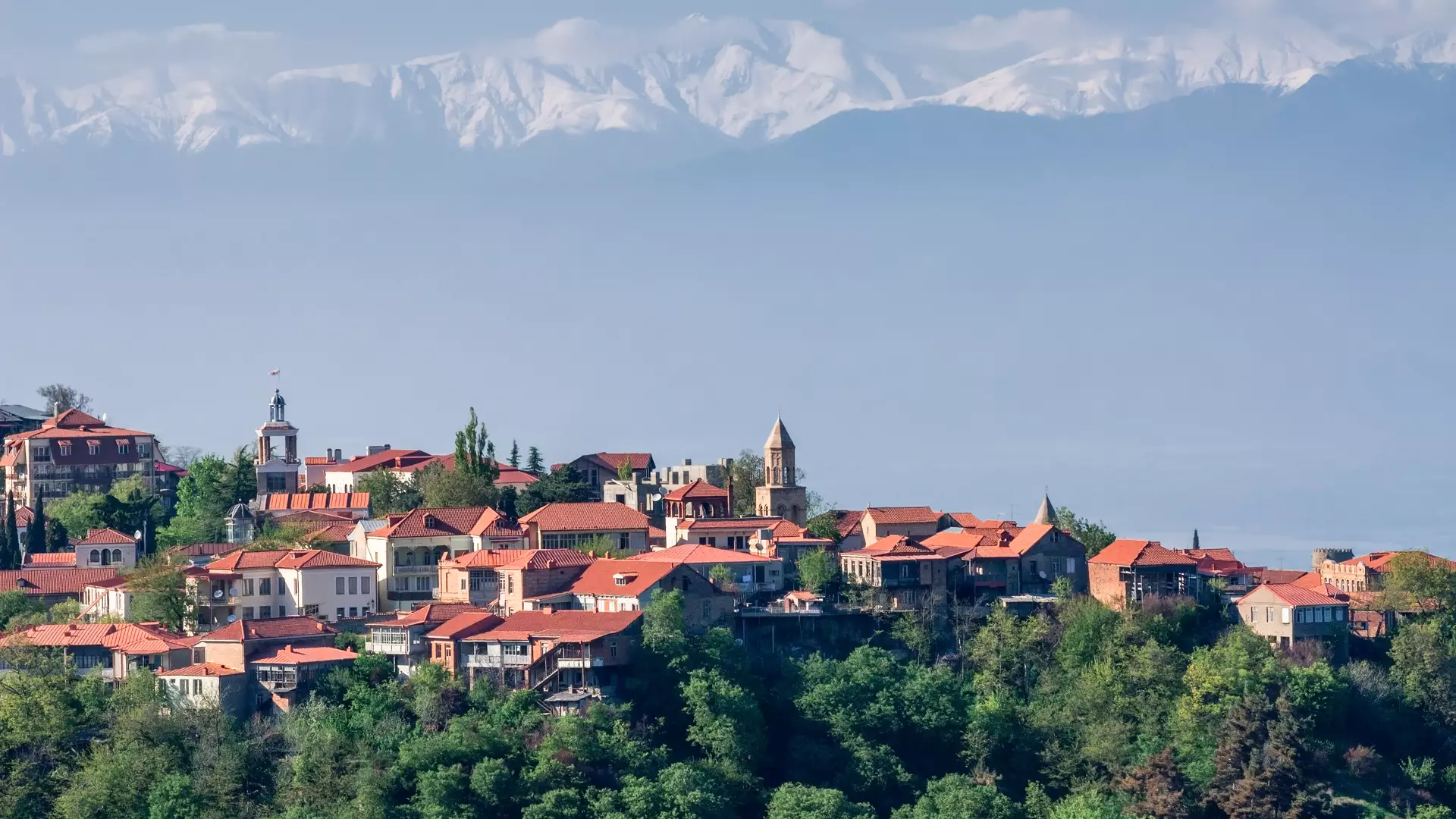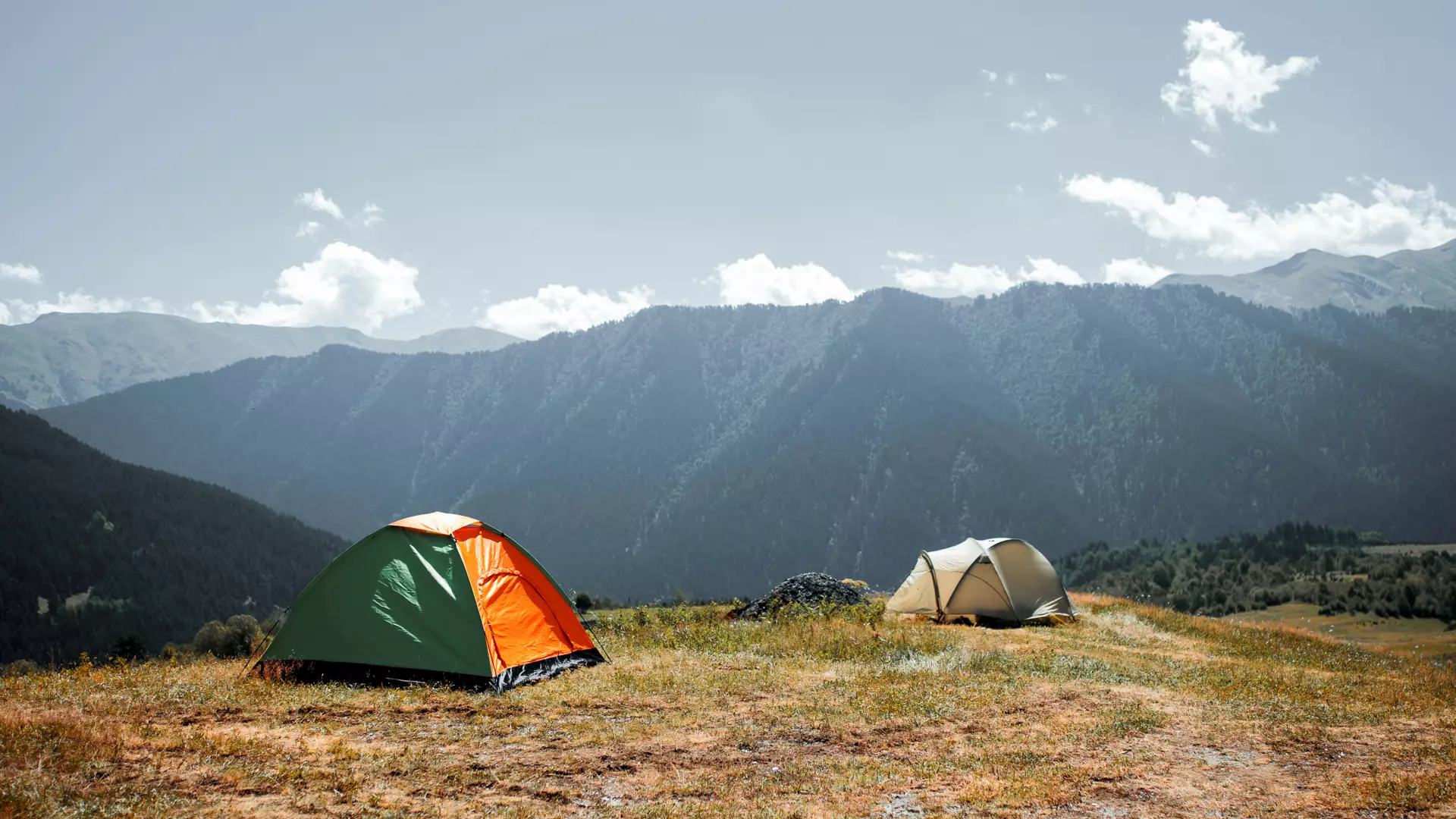8 Amazing Sights in Kakheti
Georgia, throughout its history of multiple millennia, has always had to fight to retain its statehood.
You will notice, while traveling through Kakheti, that monasteries have been built everywhere, in every village, which served as educational centers in times of peace, and as fortresses and shelters for the people in times of war.
Gremi
20 kilometers from the city of Kvareli, you will catch sight of, from the Kvareli-Telavi highway, a fortress complex built on top of a high hill. This is a part of the powerful, noble, and well-populated city that was the political center of the Kakheti Kingdom from 1466 to 1616, covering 40 hectares and having a population of more than 100,000.
In 1616, the army of Abbas I, the Shah of Persia, invaded Kakheti and destroyed it, leaving Gremi in ruins. After that crushing blow, the city gradually became completely depopulated.
From the once flourishing city, there now remain only a few restored buildings, which give a clear picture of the grandeur and strength of old Gremi. Namely, they are the wall of the fortress, the Archangel Church, a bell tower, some small church, the three-story palace of the king, a caravanserai, and a wine cellar.
Gremi Archangel Monastery has particular historical importance. The wall paintings tell us that church was built and painted in the 16th century, on the orders of Levan, the king of Kakheti.
You can see a fresco of him on the western wall of the church, where the king is depicted with a model of the church in his hand.
There is a gorgeous view of the Alazani Valley from the upper floor of the palace’s belltower.
In front of the fortress there is a parking lot with a few small shops. There you can buy Kakhetian wine, chacha, churchkhela, and souvenirs.
David Gareja
This amazing place, the 22 small small monastery complexes carved into a cliff, is at the Georgia/Azerbaijan border, on the northern slope of Udabno Mountain.
When you see David Gareja, you will immediately understand why National Geographic named it as one of the top 17 most beautiful uninhabited places.
You can get to David Gareja by car from Sagarejo, then you will have to walk to the complex. Start with the ancient monasteries leading into the general complex: David’s Lavra, Dodo’s Rka, and Natlismtsemeli.
The first monastery here was founded by Davit Garejeli. He came to Georgia in the first half of the 6th century from the city of Antioch, and is one of the Christian missionaries who came to our country to lay the foundations of monastic life, doing much for the strengthening of Christianity.
Over the centuries, the monasteries were destroyed by the enemies of Georgia and then rebuilt by the Georgian kings.
There have been times when David Gareja was a powerful political, economic, and cultural force.
At various times, different famous Georgian political and cultural figures worked there, including Sulkhan-Saba Orbeliani, the Georgian writer, scientist, and diplomat, who, 300 years ago, at the beginning of the 18th century, blazed a trail towards Europe.
The churches of David Gareja have preserved impressive wall paintings and unique frescos with depictions of the Georgian kings, including Queen Tamar.
Ujarma Fortress
This early medieval fortress city, which Forbes magazine put on its list of the top nine oldest fortresses in the world, is built atop a high hill on the right bank of the Iori River, close to the beautiful Gombori Pass. You can see the fortress city from the Tbilisi-Telavi Highway.
Ujarma Fortress was built at the turn of the 4th century by the king of Kartli, Aspaguri. One brilliant page in the history of Ujarma Fortress is related to the reign of Vakhtang Gorgasali (the second half of the 5th century), who built a grand citadel there, with severe military towers, also building churches, and making it his royal city for a time.
From the 4th to the 6th centuries, Ujarma was one of the major centers of Kartli, along with Tbilisi and Mtskheta.
Ujarma was built by Vakhtang Gorgasali in order to control the Iori River valley. Despite the fact that now only ruins remain, you can still feel the monumentality of the structure, the high level of architectural artistry, and its flawless execution. For that reason, Ujarma belongs among the best defensive architectural monuments of Georgia.
Ninotsminda Monastery Complex
This beautiful monastery complex is in Ninotsminda Village, two kilometers away from the city of Sagarejo. King Vakhtang Gorgasali had an episcopal church built here in the 5th century. At that time, Gorgasali carried out a grand reform of the church, which served to strengthen the country. As a result, the Georgian Orthodox Church became autocephalic (independent), and he founded 12 episcopates, one of which was right here, in Ninotsminda.
Today only the altar of this important church survives, which, along with its frescos, is very impressive. Next to it is a 16th-century bell tower and a two-story palace from a slightly later period, the 18th century, where a nunnery currently is active. The complex is also surrounded by a large wall built in the 18th century.
And all of this is just as monumental and impressive as the 45-year reign of King Vakhtang Gorgasali.
Lagodekhi National Park
Lagodekhi National Park is one of the most well-preserved, primordial landscapes in the world and a place for interesting adventures year-round.
The park is in the Kakhetian city of Lagodekhi, in the extreme northeast of the country, and its height above sea level fluctuates between 400 and 3,500 meters.
You will not find this kind of biodiversity in any other protected territory of Georgia. On the hiking paths you will pass by leafy forests, untouched alpine meadows, lakes pooled up on cliffs, and beautiful waterfalls. Along the way you may encounter lovely deer and eastern Caucasian ibex, and overhead may fly grouse and snowcock, which can only be found in the Caucasus.
Kvareli
This small city in Kakheti is located on the left bank of the Alazani River, in the Alazani River, at the base of the Caucasus Mountains. It is called the jewel of Kakheti, and rightly so. More than one legend has been made about the beauty of Kvareli, and poems as well.
Kvareli is a notable place because you can rest from the hustle and bustle of the city there. There you can walk through the Kvareli forest-park, enjoy yourself in Kvareli Lake, drink Kindzmarauli wine, and try delicious Kakhetian dishes.
However, in addition to the beautiful nature, the unique wine, and the rich cuisine, there are also many sights to see in Kvareli.
Go see the ancient architectural monuments, including Dolochopi Basilica, which is at least 1,300 years old and is one of the largest Christian churches in the Caucasus; the glorious Nekresi and Gremi Monasteries; and also Kvareli Fortress.
The house-museum of Ilia Chavchavadze, one of the most important figures in the history of Georgia as a 19th-century writer and political and public figure, as well as that of Kote Marjanishvili, a director and the founder of the modern Georgian theater.
One of Kvareli’s sights is the wine cellar cut into a cliff, which is a set of tunnels carved into the cliff massif, with a total length of eight kilometers. One of those tunnels is open to tourists, and a wine collection thousands of bottles strong is kept there.
Sighnaghi
Sighnaghi is a comparatively new, charming city in Kakheti, which has become a tourist hub. This is due to its inimitable Georgian character, hospitality, and European comforts.
Sighnaghi is also called the city of love. For sure, its winding, cobblestone streets and red-roof-tiled little houses will put you into an exceptionally romantic mood, and the local climate – warm, mild, and moderately humid – is perfect for you to go for a walk.
This area has been inhabited since ancient times, but the development of Sighnaghi into a city is associated with the 18th-century King Erekle II. The city’s major sight, the walled fortress of Kvareli, one of the most important historical monuments in all of Georgia, is also from the time of King Erekle. If you climb up the highest tower of the wall, you will have an impressive view of the city of Sighnaghi and the Alazani Valley before your eyes.
If you love art, then you must go see the rich collection of paintings by Niko Pirosmani (1862-1918), the genius Georgian artist, whose paintings are now being hosted by world-famous museums.
At nearly every step while walking through the city, you will come across café, wine cellars, and souvenir shops. You can also go paragliding over the city or take a zipline.
Interesting historical monuments that are important for Georgia are located in and around Sighnaghi. Of them, you definitely must go see Bodbe Monastery, which was founded by St. Nino in the 4th century.
Tusheti National Park
If you would like to see paradise on earth, then you should head up to Tusheti, because once you get there, you will realize that there is nothing exaggerated about this evaluation.
Tusheti is one of the most beautiful regions of Georgia, having been proclaimed a national park.
The beautiful villages of Tusheti are spread out over the northern slopes of the Caucasus Mountains. Traveling through there will be truly unforgettable. You will see ancient Tushetian towers and discover beautiful alpine meadows, exceptionally well-kept pine forests, the peaks of Tebulo (4,492 meters), Diklo (4,785 meters), and Sakisto (2,456 meters), and beautiful passes and valleys.
You will see ancient shrines, meet kind-hearted and hospitable Tushetians, and taste local, completely unique cuisine. If you are given kotori¸an original Tushetian khachapuri, at a supra, then know that they are only made for respected guests.
Tusheti is small. You can drive through it in three or four days, spending the night at guesthouses or in a tent under the stars. You can go on a horseback riding or bicycle tour on the walking paths. By the way, the local, Tushetian horse, which is one of the oldest breeds in the Caucasus, is exceptionally intelligent and careful.
The heart of Tusheti is Omalo, a magical village/resort, which has been added to UNESCO’s tentative list of World Heritage Sites.
No matter where you go from Omalo, everywhere around you there will be the amazing, inimitable beauty of Tusheti.
There you go, that is how amazing Kakheti is, with its nature, centuries-old and battle-hardened fortresses, and its monasteries. If you are invited to a supra there, you will understand how a toast can resemble a prayer. Traveling through this region is one big, unforgettable adventure.
Cookie Policy

